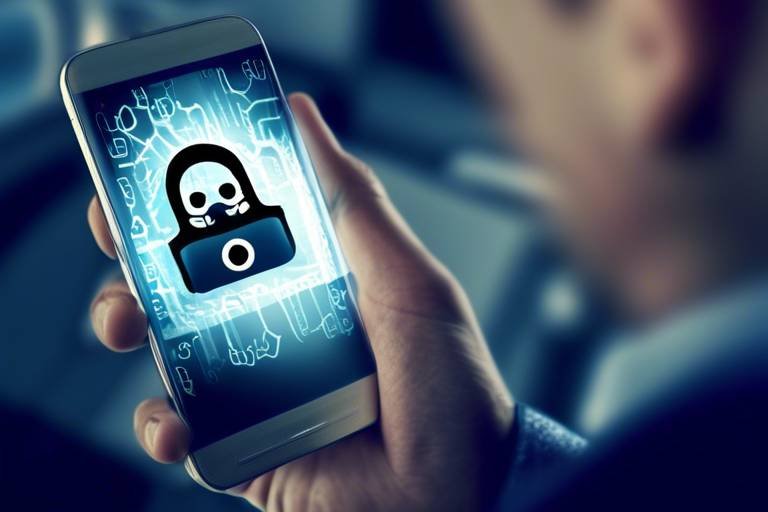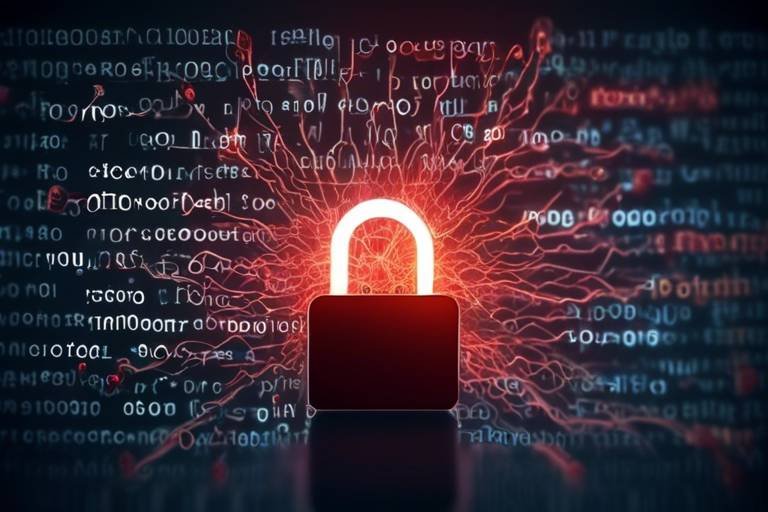Cybersecurity in Social Media - The Emerging Threat
In our hyper-connected world, social media has become an integral part of our daily lives. From sharing personal milestones to networking for professional growth, these platforms offer a plethora of opportunities. However, with great connectivity comes great responsibility—and vulnerability. The rise of social media has also given birth to a new breed of cybersecurity threats that can compromise personal information and wreak havoc on our online identities. In this article, we will explore the growing cybersecurity threats associated with social media platforms, including data breaches, phishing attacks, and the importance of user awareness in protecting personal information.
As social media usage skyrockets, so do the threats lurking in the shadows. It's like a bustling marketplace where, while many are there to connect and share, others are scheming to exploit unsuspecting users. Cybercriminals have become increasingly sophisticated, employing various tactics to infiltrate social media accounts and harvest sensitive data. The emergence of these threats is alarming, and understanding them is the first step towards safeguarding our digital lives. Some of the most prevalent threats include:
- Account Hacking: Unauthorized access to personal accounts can lead to identity theft and financial loss.
- Data Breaches: When social media platforms experience security failures, user data can be exposed to malicious actors.
- Malware Distribution: Cybercriminals often use social media to spread malware disguised as enticing links or downloads.
Understanding the common risks associated with social media is crucial for users. Many people underestimate the threats they face while scrolling through their feeds. For instance, account hacking is not just a headline; it’s a reality for many. Imagine waking up one day to find your account has been compromised, your personal messages exposed, and your friends receiving suspicious messages from you. It's a nightmare scenario that is all too real in today’s digital landscape.
Phishing attacks represent a significant concern in the realm of social media. Cybercriminals often use social engineering tactics to deceive users into providing sensitive information. They create fake profiles that mimic trusted individuals or organizations, luring users into a false sense of security. You might receive a message that seems to come from a friend asking you to click on a link, but in reality, it’s a trap designed to harvest your personal data. Recognizing these tactics is essential for protecting yourself.
Identifying phishing attempts can be a daunting task, especially when they are cleverly disguised. Here are some tips to help you spot these malicious messages:
- Check the URL: Always hover over links to see where they lead. If the URL looks suspicious or doesn't match the sender's profile, be cautious.
- Look for Typos: Phishing messages often contain spelling and grammatical errors that can give away their true nature.
- Be Wary of Urgency: If a message pressures you to act quickly, it’s likely a scam. Legitimate organizations will not rush you.
Knowing how to report phishing scams is essential for maintaining a secure online environment. If you encounter a suspicious message or link, take the following steps:
- Do Not Click: Avoid clicking on any links or downloading attachments.
- Report the Message: Most social media platforms have a reporting feature. Use it to alert the platform about the phishing attempt.
- Inform Your Contacts: Let your friends know not to engage with the suspicious message, especially if it appears to come from your account.
Data privacy is a major issue on social media. Every time you share a post, like a photo, or comment on a friend’s update, you are potentially exposing personal information. The implications of data sharing can be severe, leading to identity theft, harassment, or even financial fraud. To protect your personal information, it’s vital to understand the privacy settings of the platforms you use and to adjust them according to your comfort level.
Implementing best practices can significantly enhance your security on social media. Here are some actionable tips to safeguard your accounts and personal data:
Creating strong passwords is a fundamental step in protecting your online presence. Think of your password as the key to your digital home; it should be complex enough to deter intruders. Use a mix of upper and lower case letters, numbers, and symbols. Additionally, consider using a password manager to keep track of your passwords securely.
Two-factor authentication (2FA) adds an extra layer of security to your accounts. It’s like having a deadbolt on your door in addition to the regular lock. By enabling 2FA, you will require not only your password but also a second form of identification, such as a text message or an authentication app, to access your account. This makes it significantly harder for cybercriminals to gain unauthorized access.
What should I do if I suspect my account has been hacked?
If you suspect your account has been hacked, change your password immediately and enable two-factor authentication. Then, report the incident to the platform.
How can I protect my personal information on social media?
Adjust your privacy settings, be cautious about what you share, and regularly review your friend list to ensure you only connect with trusted individuals.
What are some signs of a phishing attempt?
Look for suspicious links, poor grammar, and messages that create a sense of urgency. If something feels off, trust your instincts.

The Rise of Cyber Threats on Social Media
This article explores the growing cybersecurity threats associated with social media platforms, including data breaches, phishing attacks, and the importance of user awareness in protecting personal information.
As social media continues to weave itself into the fabric of our daily lives, it brings along a host of cybersecurity threats that are evolving at an alarming rate. The rise of platforms like Facebook, Twitter, Instagram, and TikTok has not only transformed how we connect with friends and family but has also opened the door for malicious actors looking to exploit unsuspecting users. With billions of active users sharing personal details, photos, and opinions, cybercriminals find fertile ground to launch their attacks. It's like leaving your front door wide open in a neighborhood known for its petty thefts—just inviting trouble!
The sheer volume of data generated on social media platforms creates a treasure trove for hackers. They employ various tactics to infiltrate accounts and harvest sensitive information. Some of the most common threats include:
- Account Hijacking: Cybercriminals can easily gain access to user accounts, often through stolen credentials or phishing schemes.
- Data Breaches: Major social media platforms have experienced data breaches, exposing millions of users' personal information.
- Malware Distribution: Links shared on social media can lead to malware downloads, compromising users' devices and data.
This ever-growing list of threats highlights the necessity for users to remain vigilant. The dynamic nature of social media means that new threats can emerge overnight. For instance, as platforms introduce new features or changes, they can inadvertently create vulnerabilities that hackers are quick to exploit. Think of it as a game of whack-a-mole; just when you think you've addressed one issue, another pops up!
Moreover, the anonymity that social media provides can embolden cybercriminals. They can create fake profiles, impersonate others, and engage in deceptive practices without fear of immediate repercussions. This anonymity complicates the process of identifying and apprehending offenders, making it crucial for users to stay informed about potential risks. Understanding the landscape of cyber threats is the first step in safeguarding personal information.
In conclusion, as social media continues to evolve, so too will the threats that accompany it. Awareness and education about these risks are essential for all users. By staying informed and adopting robust security practices, individuals can protect themselves from becoming victims of cybercrime. After all, in the digital world, knowledge is not just power; it's a shield against the rising tide of cyber threats.
Understanding the common risks is crucial for users. This section highlights prevalent issues like account hacking, data theft, and malware distribution that users face on social media.
Phishing attacks are a significant concern. This subsection explains how attackers use social engineering tactics to deceive users into providing sensitive information through fake social media profiles.
Identifying phishing attempts can be challenging. This part offers tips on recognizing suspicious messages and links that may lead to phishing attacks.
Knowing how to report phishing scams is essential. This section outlines the steps users can take to report suspicious activity to social media platforms.
Data privacy is a major issue on social media. This subsection discusses the implications of data sharing and how users can protect their personal information.
Implementing best practices can enhance security. This section provides actionable tips for users to safeguard their accounts and personal data while using social media platforms.
Creating strong passwords is a fundamental step. This part emphasizes the importance of using complex passwords and suggests effective password management strategies.
Two-factor authentication adds an extra layer of security. This section explains how enabling this feature can help protect user accounts from unauthorized access.
Q1: How can I tell if my social media account has been hacked?
A: Look for unusual activity, such as messages you didn't send or changes to your profile. If you notice anything suspicious, change your password immediately.
Q2: What should I do if I receive a suspicious message on social media?
A: Do not click on any links or provide personal information. Report the message to the platform and block the user if necessary.
Q3: Is it safe to use my social media accounts on public Wi-Fi?
A: Public Wi-Fi can be risky. Avoid logging into sensitive accounts while on public networks, or use a VPN for added security.

Common Cybersecurity Risks
In our digital age, social media platforms are as ubiquitous as morning coffee. But just like that cup of joe, there are hidden dangers lurking beneath the surface. Understanding the common cybersecurity risks associated with social media is crucial for every user. With billions of people sharing their lives online, the opportunities for cybercriminals to exploit vulnerabilities are vast. Let's dive into some of the prevalent issues that users face, including account hacking, data theft, and malware distribution.
One of the most alarming risks is account hacking. Imagine waking up one day to find that your social media account has been compromised. This can happen when attackers use methods like brute force attacks or phishing scams to gain access to your credentials. Once they have control, they can impersonate you, send malicious links to your friends, and even steal sensitive information. It’s like handing over the keys to your house to a stranger. You wouldn’t do that, right?
Another significant concern is data theft. When you post personal information online, you may think it’s harmless, but cybercriminals can harvest this data for malicious purposes. For instance, public information like your birthday, location, or even your pet's name can be pieced together to answer security questions on other accounts. According to recent studies, a staggering number of users do not realize how much data they are sharing, making them easy targets for identity theft and fraud.
Moreover, malware distribution is a growing threat on social media. Cybercriminals often create fake profiles or pages that look legitimate, only to share links that lead to malicious software. This malware can infect your device, steal personal information, or even take control of your system. Just like a wolf in sheep's clothing, these threats can be incredibly deceptive. Users must remain vigilant and cautious about the links they click on, as one wrong move could lead to devastating consequences.
Here’s a quick overview of some common cybersecurity risks on social media:
| Risk Type | Description |
|---|---|
| Account Hacking | Unauthorized access to your social media accounts through stolen credentials. |
| Data Theft | Harvesting of personal information for identity theft or fraud. |
| Malware Distribution | Spreading harmful software through deceptive links or profiles. |
In conclusion, the digital landscape of social media presents numerous cybersecurity risks that users must navigate carefully. Being aware of these threats is the first step toward protecting yourself. Remember, staying informed and cautious can make a world of difference in your online safety.
Q: What should I do if my account gets hacked?
A: Immediately change your password, enable two-factor authentication, and report the incident to the platform.
Q: How can I tell if a link is malicious?
A: Look for unusual URLs, check for typos, and avoid links sent from unknown accounts.
Q: Is using public Wi-Fi safe for accessing social media?
A: Public Wi-Fi can be risky. Always use a VPN to secure your connection when accessing sensitive information.

Phishing Attacks
Phishing attacks are a significant concern in the realm of cybersecurity, especially on social media platforms where users often share personal information without a second thought. These deceptive tactics are like a wolf in sheep's clothing; they appear harmless and familiar, yet they can lead to devastating consequences. Essentially, phishing involves tricking individuals into providing sensitive information—like passwords, credit card numbers, or social security details—by masquerading as a trustworthy entity. Attackers typically create fake profiles or pages that mimic legitimate organizations or friends, making it all too easy for unsuspecting users to fall into their traps.
In the fast-paced world of social media, where interactions are frequent and often casual, users may encounter various types of phishing attempts. For instance, you might receive a message from a "friend" asking you to click on a link that promises exciting news, only to find out later that it leads to a malicious site designed to harvest your information. It's crucial to remain vigilant and skeptical about unsolicited messages, even from people you know. Remember, a genuine friend would not ask for sensitive information through a social media message!
Moreover, phishing attacks can also take the form of fake advertisements or posts that lure users into clicking on links. These links may redirect you to websites that look legitimate but are designed to steal your personal data. According to recent studies, approximately 30% of social media users have encountered phishing attempts, indicating how prevalent this issue has become. It's not just about avoiding the obvious scams; it's about cultivating a healthy skepticism towards everything you see online.
To better understand how phishing attacks operate, let's consider some common tactics used by cybercriminals:
- Urgency and Fear: Phishing messages often create a sense of urgency, prompting users to act quickly without thinking. For example, a message may claim that your account will be suspended unless you verify your information immediately.
- Too Good to Be True Offers: If an offer sounds too good to be true, it probably is. Phishing schemes often promise extravagant rewards or discounts to entice users to click on links.
- Impersonation: Attackers may impersonate well-known companies or even friends, making it all the more difficult to spot a scam.
Recognizing these tactics is the first step in defending against phishing attacks. By being aware of the common signs, users can better protect themselves and their personal information from falling into the wrong hands. Always double-check URLs, scrutinize messages for grammatical errors, and never click on suspicious links. If something feels off, it probably is!

Recognizing Phishing Attempts
In the vast ocean of social media, where connections are made and information flows freely, the risk of falling victim to phishing attempts lurks beneath the surface. Phishing is like a deceptive mirage; it appears genuine but is designed to trap the unsuspecting. The key to staying safe is learning how to recognize these attempts before they ensnare you. So, how can you spot a phishing attempt? Here are some telltale signs to look out for:
First and foremost, be wary of unexpected messages from friends or followers. If someone you know suddenly sends you a link without context, it might be worth a second look. Often, hackers gain access to accounts and send out malicious links to the victim's contacts. If the message feels off or out of character, trust your instincts and verify it directly with the person.
Another red flag is poor spelling and grammar. Many phishing messages come from non-native speakers, leading to awkward phrasing and typos. If you receive a message that seems hastily constructed or riddled with errors, it’s likely a scam. Legitimate companies and individuals typically take the time to communicate clearly and professionally.
Additionally, pay attention to the urgency in the message. Phishing attempts often create a sense of panic or urgency, urging you to act quickly. Phrases like "Your account will be suspended!" or "Immediate action required!" are common tactics used to pressure you into clicking a link or providing sensitive information. Remember, a legitimate organization will not rush you into making hasty decisions.
Furthermore, be cautious of unusual links. Before clicking on any link, hover over it to see the URL. If it looks suspicious or does not match the official website, don’t click it! Phishing links often mimic legitimate sites but may have slight variations in spelling or domain extensions.
Lastly, if you ever feel uncertain about a message, you can always reach out directly to the company or individual through official channels. This is a simple yet effective way to confirm whether the communication you received was genuine.
By keeping these tips in mind, you can develop a keen eye for spotting phishing attempts and protect yourself from potential threats on social media. Remember, awareness is your best defense!
- What should I do if I suspect a phishing attempt? If you believe you've encountered a phishing attempt, do not click any links or provide any information. Report the message to the platform and consider changing your passwords.
- Can I recover my account if I've been phished? In many cases, yes. Contact the social media platform’s support team immediately and follow their instructions to secure your account.
- How can I educate others about phishing? Share your knowledge! Discuss phishing tactics with friends and family, and encourage them to stay vigilant online.

Reporting Phishing Scams
In today's digital age, where our lives are intertwined with social media, recognizing and reporting phishing scams is crucial. Imagine you're scrolling through your feed, and suddenly a message pops up that seems to be from a friend, asking you to click on a suspicious link. What do you do? First off, it's essential to stay calm and not act impulsively. Reporting these scams not only protects you but also helps safeguard your friends and the broader community from potential threats.
When you encounter a phishing attempt, the first step is to gather as much information as possible. Take a screenshot of the suspicious message or post, noting any details that stand out, such as the sender's profile name, the content of the message, or any links included. This information will be invaluable when you report the scam.
Most social media platforms have a straightforward process for reporting phishing scams. Here’s a quick guide to help you navigate through it:
- Facebook: Click on the three dots on the top right of the suspicious message or post, select "Find Support or Report," and follow the prompts.
- Twitter: Click on the downward arrow on the tweet, select "Report Tweet," and choose the appropriate reason for reporting.
- Instagram: Tap the three dots above the post, select "Report," and follow the instructions for reporting spam or phishing.
- LinkedIn: Click on the three dots next to the message, select "Report," and provide the necessary details.
After reporting, it’s wise to inform your friends or followers about the scam, especially if it involves impersonation. A simple post or message warning them can prevent others from falling into the same trap. Remember, the more people are aware of phishing tactics, the less effective these scams become.
In addition to reporting the scam on the platform, consider taking further action by notifying your email provider if the phishing attempt came through an email. They often have dedicated procedures for reporting phishing emails, which can help protect other users as well.
Lastly, keep in mind that while reporting is vital, prevention is even better. Always stay vigilant and educate yourself about the latest phishing tactics. Knowledge is your best defense against these cyber threats!
What is phishing?
Phishing is a cybercrime where attackers impersonate legitimate entities to trick individuals into providing sensitive information, such as passwords or credit card numbers.
How can I tell if a message is a phishing attempt?
Look for signs such as poor grammar, urgent requests for personal information, or links that don’t match the official website URL. If something feels off, it probably is!
What should I do if I accidentally clicked on a phishing link?
Immediately change your passwords for any affected accounts, enable two-factor authentication, and monitor your accounts for any suspicious activity.
Can I recover my account if it was hacked through phishing?
Yes, most platforms have recovery processes in place. Follow their guidelines to regain access and secure your account.

Data Privacy Concerns
In today's digital landscape, data privacy has become a critical concern, especially on social media platforms. Every time we share a post, like a photo, or comment on a friend's status, we are contributing to a vast pool of personal information that can be exploited. The implications of this data sharing are profound, as it can lead to unauthorized access to our private lives. Imagine leaving your front door wide open for anyone to walk in; that’s what sharing personal information on social media can feel like if proper precautions aren’t taken!
Many users underestimate the risks associated with data sharing. When you think about it, every tweet, every status update, and every photo can reveal something about your habits, preferences, and even your location. Cybercriminals are keenly aware of this and often use this information to target individuals or groups for various malicious activities. For instance, they can create highly personalized phishing attacks that are more likely to succeed because they seem legitimate and relevant.
Moreover, social media platforms often have complex privacy settings that can confuse users. Many people simply accept the default settings without realizing the potential exposure of their data. It's essential to take the time to review and customize your privacy settings to limit who can see your information. Here’s a quick overview of some common privacy concerns:
- Data Breaches: These occur when unauthorized individuals gain access to sensitive information stored by social media companies.
- Third-Party Access: Many apps and services request access to your social media accounts, which can lead to data misuse.
- Location Tracking: Sharing your location can expose you to risks, especially if you’re not aware of who can see this information.
To put things into perspective, consider a scenario where you post about your upcoming vacation on social media. While it may seem harmless, you are inadvertently notifying potential burglars that your home will be empty. This is why being cautious about what you share is vital. Take a moment to think about the long-term effects of your posts. Will they still be relevant or accessible in a few years? Will they come back to haunt you? As the saying goes, “Once it’s out there, it’s out there.”
Understanding these data privacy concerns is just the beginning. Users must also be proactive in protecting their personal information. Regularly updating privacy settings, being selective about friend requests, and understanding the implications of sharing personal details are all crucial steps. Remember, your data is valuable, and taking control of it is essential in today’s digital age.

Best Practices for Users
In today’s digital age, where social media has become a staple of our daily lives, it’s crucial to arm ourselves with the right tools and knowledge to navigate these platforms safely. Just like you wouldn’t leave your front door wide open in a busy neighborhood, you shouldn’t leave your social media accounts vulnerable to cyber threats. Implementing best practices for online security is not just a recommendation; it’s a necessity. Here are some essential strategies that can help you safeguard your personal information and enhance your online safety.
First and foremost, creating strong passwords is fundamental. Think of your password as the key to your digital home. If it’s weak, it’s like using a flimsy lock that anyone can pick. A strong password should be at least 12 characters long and include a mix of uppercase and lowercase letters, numbers, and symbols. Avoid using easily guessable information, such as your birthday or the word "password." Instead, consider using a passphrase—a series of random words strung together that is both memorable and complex. For example, "BlueSky$42!Dancing" is much stronger than "123456." To manage these complex passwords without losing your mind, using a password manager can be a lifesaver. These tools securely store your passwords and can even generate strong ones for you.
Next, enabling two-factor authentication (2FA) is a game-changer. This feature adds an extra layer of security to your accounts. Imagine you have a vault with a combination lock; 2FA is like adding a second lock that requires a key. With 2FA, even if someone manages to steal your password, they won’t be able to access your account without the second verification step. This could be a text message sent to your phone or a code generated by an authentication app. Always take advantage of this feature whenever it’s available on social media platforms.
Moreover, being aware of privacy settings is vital. Social media platforms often have a myriad of privacy options that allow you to control who can see your posts and personal information. Regularly review these settings and adjust them according to your comfort level. For example, consider setting your profile to private, which means only approved friends can see your content. This simple step can significantly reduce the risk of unwanted attention and potential cyber threats.
Another critical aspect is to stay informed about the latest cybersecurity threats. The landscape of cyber threats is constantly evolving, and being aware of the latest scams and tactics can help you avoid falling victim. Follow reputable tech news sources or cybersecurity blogs to keep yourself updated. Additionally, if you receive a suspicious message or friend request, take a moment to verify its authenticity before engaging. It’s always better to err on the side of caution.
Lastly, remember that awareness and education play a crucial role in cybersecurity. Engage in discussions about online safety with friends and family. Share tips and experiences to create a more informed community. The more you learn and share, the better equipped you’ll be to handle potential threats. In fact, consider joining online forums or groups focused on cybersecurity to expand your knowledge and connect with others who share your concerns.
- What is the best way to create a strong password? Use a combination of letters, numbers, and symbols. Aim for at least 12 characters and avoid personal information.
- How does two-factor authentication work? It requires a second form of verification, like a text message or an app code, in addition to your password.
- Why should I review my privacy settings? Regularly checking your privacy settings helps control who can see your information and posts, reducing the risk of exposure.
- How can I stay updated on cybersecurity threats? Follow reputable tech news sources and subscribe to cybersecurity blogs to stay informed about the latest threats and safety tips.

Strong Passwords
Creating is one of the most fundamental steps you can take to protect your online presence, especially on social media platforms. Think of your password as the lock on your front door; if it's weak, anyone can waltz in without a second thought. A strong password is your first line of defense against unauthorized access to your accounts, and it’s crucial to make it as robust as possible.
So, what makes a password strong? Here are some essential characteristics that you should consider:
- Length: Aim for at least 12-16 characters. The longer, the better!
- Complexity: Use a mix of uppercase letters, lowercase letters, numbers, and special characters. This variety makes it harder for attackers to crack your password.
- Unpredictability: Avoid using easily guessable information like birthdays, names, or common words. Instead, think of random phrases or a series of unrelated words.
To illustrate the importance of strong passwords, let’s compare two examples:
| Password | Strength Level |
|---|---|
| 123456 | Weak |
| !A1b2C3d4E5f6G7 | Strong |
As you can see, the first password is incredibly weak and can be cracked in seconds. On the other hand, the second password, with its complexity and length, would take a hacker much longer to decipher. But creating a strong password is only half the battle. You also need to manage your passwords effectively.
Using a password manager can be a game-changer. These tools not only help you generate complex passwords but also store them securely, so you don’t have to remember every single one. This means you can use unique passwords for different accounts without the stress of forgetting them. Imagine a scenario where you can create a new, strong password for every social media account and not have to worry about memorizing them; that’s the power of a password manager!
In conclusion, strong passwords are essential in the fight against cyber threats on social media. By taking the time to create complex, unique passwords and utilizing password management tools, you can significantly enhance your online security and protect your personal information from prying eyes.
- What is a strong password? A strong password is at least 12 characters long, includes a mix of letters, numbers, and symbols, and avoids easily guessable information.
- How often should I change my passwords? It's advisable to change your passwords every three to six months or immediately if you suspect a breach.
- Can I use the same password for multiple accounts? No, using the same password across multiple accounts increases your risk. If one account is compromised, all your accounts are at risk.
- What is a password manager? A password manager is a tool that helps you generate, store, and manage your passwords securely.

Two-Factor Authentication
Two-factor authentication (2FA) is like having a double lock on your front door; it adds an extra layer of security that can make all the difference in protecting your social media accounts. In a world where cyber threats are lurking around every corner, enabling 2FA is a crucial step every user should take. It’s not just about having a strong password anymore; it's about ensuring that even if someone gets their hands on your password, they still can't access your account without the second piece of the puzzle.
So, how does two-factor authentication work? Essentially, it requires two forms of verification before you can log in. The first is typically your password, while the second could be a text message code sent to your phone, an email confirmation, or even a biometric scan like a fingerprint. This means that even if a hacker manages to steal your password through a phishing attack or data breach, they would still need that second form of verification to gain access. It’s like needing both the key and a secret code to enter your digital home.
Implementing 2FA is straightforward and can be done in just a few steps. Most social media platforms offer this feature in their security settings. Here’s a quick rundown of how to enable it:
- Go to your account settings.
- Look for the security or privacy section.
- Select the option for two-factor authentication.
- Follow the prompts to set it up, usually involving your phone number or an authentication app.
Once enabled, you’ll receive a verification code every time you log in from a new device or location. This additional step may seem tedious, but it’s a small price to pay for enhanced security. Just think about it: would you rather spend an extra 30 seconds logging in, or risk losing your account and all your personal information? The choice is clear.
Moreover, there are different methods of two-factor authentication you can choose from. Here’s a comparison of the most common options:
| Method | Description | Pros | Cons |
|---|---|---|---|
| SMS Codes | A code sent to your phone via text message. | Easy to set up and use. | Can be intercepted by hackers. |
| Email Codes | A code sent to your registered email address. | Simple and commonly used. | Vulnerable if your email is compromised. |
| Authentication Apps | Apps like Google Authenticator or Authy generate codes. | More secure than SMS or email. | Requires installation and setup. |
| Biometric Authentication | Uses fingerprints or facial recognition. | Highly secure and convenient. | Depends on device compatibility. |
In conclusion, two-factor authentication is a powerful tool in your cybersecurity arsenal. By taking this simple step, you significantly reduce the risk of unauthorized access to your social media accounts. Remember, in the digital age, it’s better to be safe than sorry. So, don’t wait—enable two-factor authentication today and give your online presence the protection it deserves!
Q1: Is two-factor authentication necessary for all social media accounts?
A1: While it's not mandatory, enabling 2FA for all your accounts is highly recommended to enhance security.
Q2: What should I do if I lose access to my two-factor authentication method?
A2: Most platforms provide backup codes during setup. Keep these in a safe place, or contact customer support for recovery options.
Q3: Can two-factor authentication be bypassed?
A3: While it significantly increases security, no system is foolproof. Always stay vigilant and report any suspicious activity.
Frequently Asked Questions
- What are the most common cyber threats on social media?
The most common cyber threats on social media include phishing attacks, account hacking, data breaches, and malware distribution. As social media platforms grow, so do the tactics used by cybercriminals to exploit unsuspecting users.
- How can I recognize a phishing attempt on social media?
Recognizing phishing attempts can be tricky, but look for suspicious messages or links that seem off. If a message urges you to click a link or provide personal information urgently, it’s best to be cautious. Always double-check the sender's profile and look for signs of impersonation.
- What should I do if I encounter a phishing scam?
If you encounter a phishing scam, report it immediately to the social media platform. Most sites have a straightforward process for reporting suspicious activity. Additionally, consider informing your friends to prevent them from falling victim to the same scam.
- How can I protect my personal data on social media?
Protecting your personal data starts with being mindful of what you share. Limit the amount of personal information on your profile and adjust your privacy settings to restrict who can see your posts. Regularly review your friend list and remove any suspicious accounts.
- What are some best practices for creating strong passwords?
When creating strong passwords, aim for a mix of letters, numbers, and symbols. Avoid using easily guessed information like birthdays or names. Consider using a password manager to store and generate complex passwords, making it easier to maintain security across multiple accounts.
- What is two-factor authentication and why is it important?
Two-factor authentication (2FA) adds an extra layer of security by requiring not just your password but also a second form of verification, like a text message code. This makes it much harder for unauthorized users to access your account, even if they have your password.



















